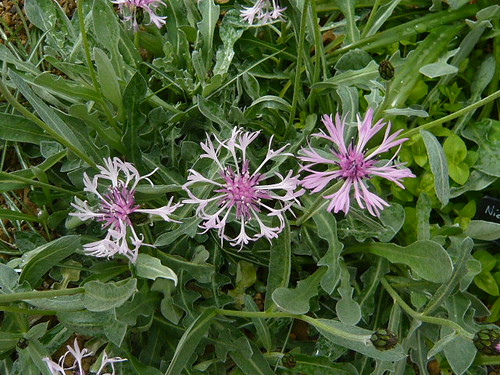Growing Centaurea
Centaurea are a group of plants, the Knapweeds, related to cornflowers and similar in appearance to thistles they look far better than either in a cottage garden environment.
The National collection of Centaurea is held at Bide-a wee Cottage garden in Morpeth Northumberland.
Centaurea Growing
- Centaurea grow best in a moisture retentive soil  and are equally at home in sun or partial shade. Otherwise it is not fussy about soil conditions.
- The common feature of the Knapweed family is the flower’s scaly brown base with tightly gather multiple petals.
- Robust in constitution they are a survivor in many a neglected garden.
- Respond well to being cut back after flowering it is also suitable for naturalising in meadows.
Some Varieties to Grow
- Two perennial species are British natives Centaurea nigra and Centaurea scabiosa. Centaurea nigra grows in wet pasture, moor and along stream banks.
- Centaurea range in size from the ground hugging Centaurea mollis, with prostrate foliage and lavender blue flowers to the giant Centaurea macrocephala, growing up to 4ft with large yellow flower heads.
- Centaurea Achtarovii shown above is a smaller growing variety.
- The first to flower is the Centaurea montana the perennial cornflower. In late May flowers are seen in a variety of pastel shades and deep blue.
For more information on growing larger Centaurea read ‘garden gem or invasive weed’.
Plants and seeds are available from Thompson Morgan

One thought on “Growing Centaurea”
Comments are closed.